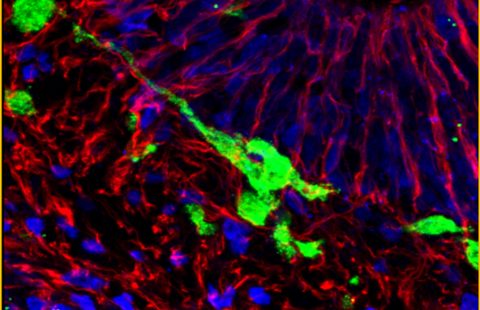 (Illustrative image) © AdobeStock
(Illustrative image) © AdobeStock
While the role of certain air pollutants is now recognized in some cancers in adults, it has not yet been established in the case of acute leukemia in children. A team of researchers from Inserm, in collaboration with Sorbonne Paris Nord University, Paris Cité University, INRAE[1], and Swiss researchers, used data from the GEOCAP-Birth study based on the national registry of childhood cancer[2] to assess the risk of acute leukemia based on residential exposure to air pollutants at birth. Their findings, published in Environmental Health, show significant associations between exposure to certain air pollutants and the occurrence of the two main types of pediatric leukemia.
Acute leukemia is the most common cancer in children under the age of 15. It is characterized by the uncontrolled proliferation of immature hematopoietic cells produced by the bone marrow, which is the source of all blood cell lines in the body. These cells gradually replace functional blood cells, preventing them from performing their tasks.
The two main types of leukemia in children are acute lymphoblastic leukemia (ALL), which accounts for 80% of cases, and acute myeloid leukemia (AML), which accounts for 15% of cases. While some risk factors in children are now well known (exposure to high doses of ionizing radiation, certain genetic factors, and certain types of chemotherapy), the role of perinatal exposure[3] to certain environmental factors, such as exposure to air pollutants, is still debated.The carcinogenic potential for humans of certain components, particularly those from road traffic, is now recognized, but the evidence regarding childhood leukemia remains limited.
After showing in previous studies that proximity to a major road at the time of diagnosis was associated with an increased risk of developing AML in childhood in France, the GEOCAP research group now led by Stéphanie Goujon, an epidemiologist at the Center for Research in Epidemiology and Statistics (Inserm/INRAE/ Sorbonne Paris Nord University/Paris Cité University), has taken its investigations further.
The team focused on the impact on the risk of developing acute leukemia of exposure to air pollutants at the place of residence at birth—an indicator of the exposure that the child may also have been subjected to in utero.
To do this, the scientists used data from the GEOCAP-Birth national registry-based study, comparing 581 children with ALL and 136 children with AML, born and diagnosed between 2010 and 2015, with a control population of nearly 12,000 children born during the same period. Exposure indicators included proximity to a high-traffic road (length of roads within 500 m) and modeling of exposure to several traffic-related pollutants: nitrogen dioxide (NO2), fine particulate matter PM2.5, and black carbon[4]. Areas of residence were categorized into three levels of urbanization: urban units with fewer than 5,000 inhabitants[5] , between 5,000 and 99,999 inhabitants, and 100,000 inhabitants or more.
The researchers observed an association between exposure to PM2.5 and the risk of developing ALL: the most exposed children had a 70% higher risk than the least exposed children, and each 2 μg/m3 increase in PM2.5 concentration was associated with a 14% increase risk, on average. This association was observed in all three categories of urban units.
However, the presence of a major road less than 500 meters from the residence did not appear to be associated with the risk of developing acute leukemia. Similarly, no association was observed with exposures to NO2 and black carbon, overall. However, in urban areas with fewer than 5,000 inhabitants and those with between 5,000 and 99,999 inhabitants, an 80% increase in the risk of ALL was observed in children most exposed to black carbon compared to those least exposed. According to the research team, these results suggest that sources of PM2.5 pollution (black carbon in particular) other than road traffic may be involved (e.g., pollution from industrial production or domestic heating).
“Our work supports the hypothesis that perinatal exposure to air pollution plays a role in the onset of acute leukemia in children, particularly supporting the involvement of PM2.5 fine particles in acute lymphoblastic leukemia,” says Aurélie Danjou, Inserm researcher and first author of the publication. “Future large studies could help to consolidate the results concerning acute myeloid leukemia, but also to better understand which sources of pollution are responsible for the observed associations and which other pollutants could play a role“, concludes the researcher.
[1] This work was supported by ANSES, INCa, and the Fondation de France.
[2] The main objective of the GEOCAP research program, coordinated by Stéphanie Goujon, is to study the influence of environmental exposures on the risk of cancer in children, based on the spatial coordinates of their place of residence. It is based on two national case-control studies: GEOCAP-Diag, based on the address of residence at the time of diagnosis, and GEOCAP-Birth, based on the address of residence at birth.
[3] Perinatality extends from pregnancy to the first months of infancy.
[4] Black carbon is found in the finest part of PM2.5 particles.
[5] In mainland France, an urban unit is defined by INSEE as a municipality or group of municipalities with at least 2,000 inhabitants and a distance between buildings of less than 200 meters.
These contents could be interesting :


